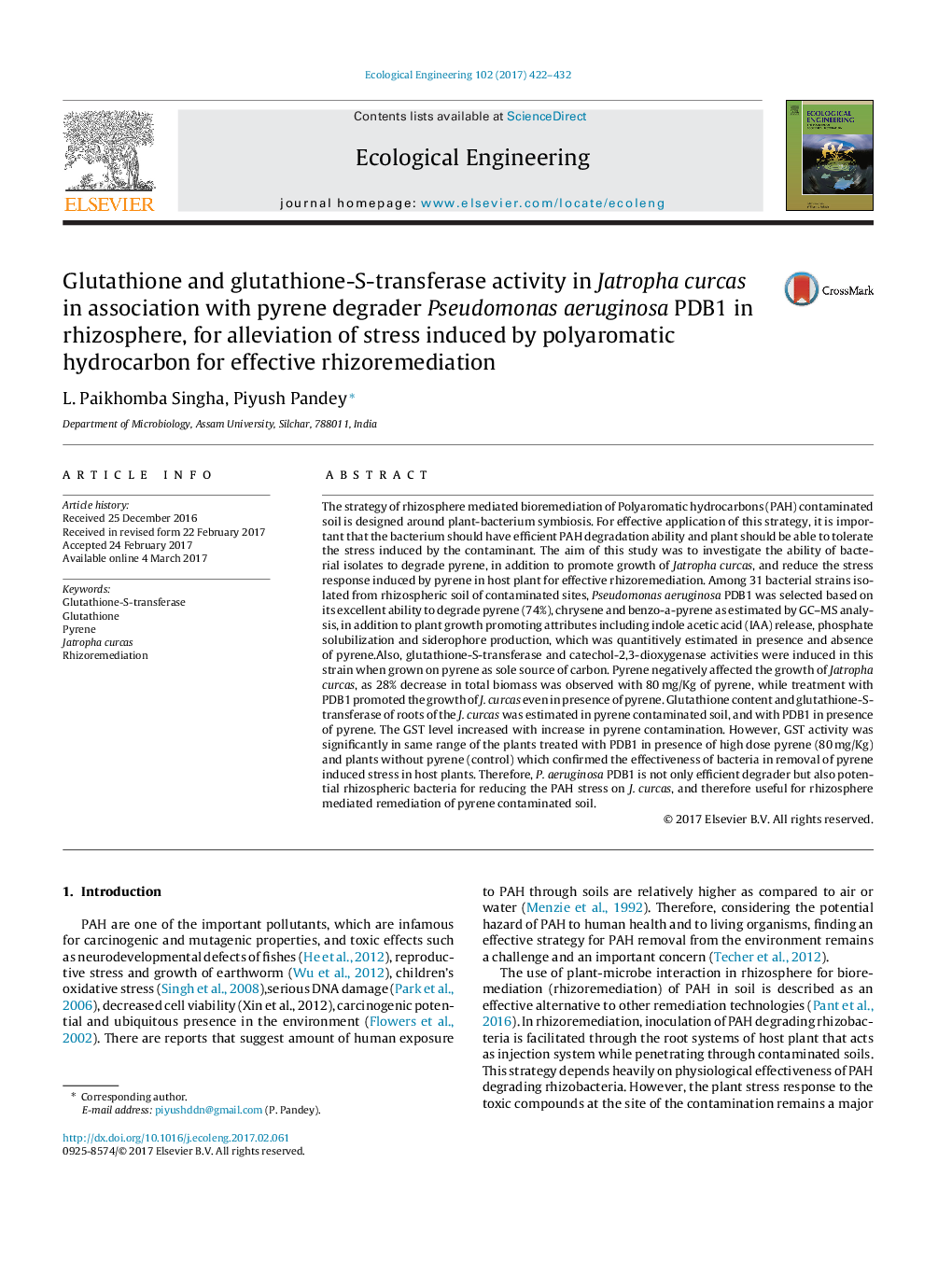| Article ID | Journal | Published Year | Pages | File Type |
|---|---|---|---|---|
| 5743787 | Ecological Engineering | 2017 | 11 Pages |
The strategy of rhizosphere mediated bioremediation of Polyaromatic hydrocarbons (PAH) contaminated soil is designed around plant-bacterium symbiosis. For effective application of this strategy, it is important that the bacterium should have efficient PAH degradation ability and plant should be able to tolerate the stress induced by the contaminant. The aim of this study was to investigate the ability of bacterial isolates to degrade pyrene, in addition to promote growth of Jatropha curcas, and reduce the stress response induced by pyrene in host plant for effective rhizoremediation. Among 31 bacterial strains isolated from rhizospheric soil of contaminated sites, Pseudomonas aeruginosa PDB1 was selected based on its excellent ability to degrade pyrene (74%), chrysene and benzo-a-pyrene as estimated by GC-MS analysis, in addition to plant growth promoting attributes including indole acetic acid (IAA) release, phosphate solubilization and siderophore production, which was quantitively estimated in presence and absence of pyrene.Also, glutathione-S-transferase and catechol-2,3-dioxygenase activities were induced in this strain when grown on pyrene as sole source of carbon. Pyrene negatively affected the growth of Jatropha curcas, as 28% decrease in total biomass was observed with 80Â mg/Kg of pyrene, while treatment with PDB1 promoted the growth of J. curcas even in presence of pyrene. Glutathione content and glutathione-S-transferase of roots of the J. curcas was estimated in pyrene contaminated soil, and with PDB1 in presence of pyrene. The GST level increased with increase in pyrene contamination. However, GST activity was significantly in same range of the plants treated with PDB1 in presence of high dose pyrene (80Â mg/Kg) and plants without pyrene (control) which confirmed the effectiveness of bacteria in removal of pyrene induced stress in host plants. Therefore, P. aeruginosa PDB1 is not only efficient degrader but also potential rhizospheric bacteria for reducing the PAH stress on J. curcas, and therefore useful for rhizosphere mediated remediation of pyrene contaminated soil.
